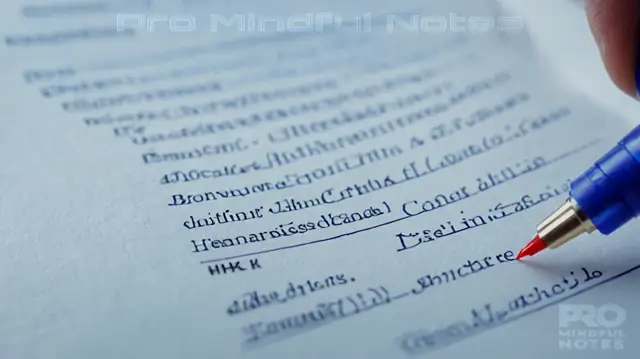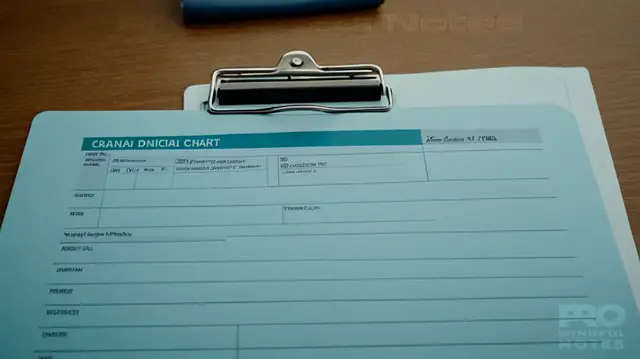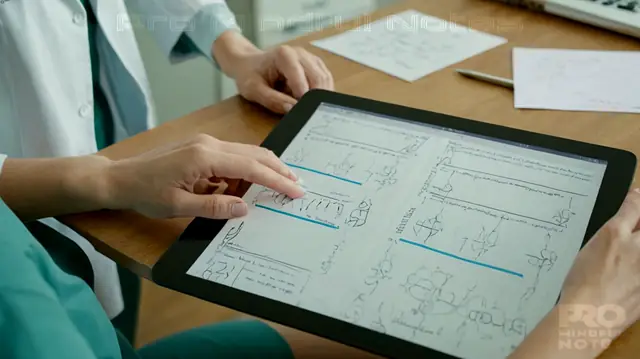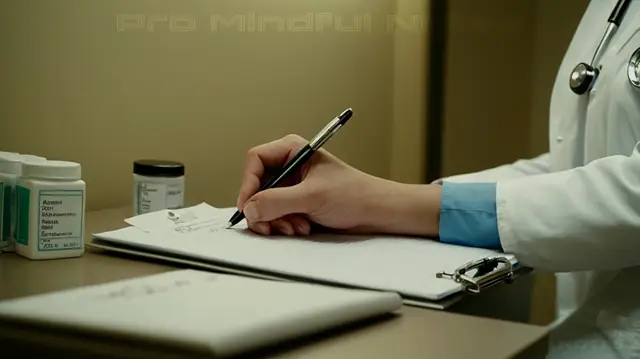Understanding Discharge Notes: A Comprehensive Guide with Example

In this comprehensive guide, pt discharge summary will be explored as a vital document that provides a concise overview of a patient's treatment journey, from their initial presentation to their eventual termination. We will delve into the importance of discharge summary mental health, outlining the essential components that make up a well-crafted note. This includes the chief complaint, diagnosis, treatment goals, and interventions used during the therapy process.
Furthermore, we will examine various templates for outpatient mental health discharge summary template and therapy discharge summary template, as well as provide examples of what a completed discharge note should look like in different settings. These may include mental health discharge plan example, sample discharge summary for mental health, or even discharge summary sample mental health. We will also touch on the importance of including treatment goals in the discharge summary, such as those outlined in a substance abuse discharge summary example.
Through this guide, readers will gain a deeper understanding of how to effectively create and utilize termination note for therapy, counseling, physical therapy, or other forms of treatment. We will also explore different scenarios, including counseling discharge summary example, physical therapy discharge summary example, and even social work discharge summary example. Whether you are a healthcare professional, patient, or family member seeking to understand the discharge process, this comprehensive guide is designed to provide valuable insights and practical examples for navigating the world of mental health treatment and termination.
- What is a Discharge Note?
- Purpose of a Discharge Note
- Components of a Discharge Note
- Chief Complaint and HPI (History of Present Illness)
- Assessment and Diagnosis
- Treatment Plan and Interventions
- Progress Made and Goals Achieved
- Recommendations for Future Care
- Example: A Comprehensive Discharge Note
- Tips for Completing a High-Quality Discharge Note
- Conclusion
- Video about Understanding Discharge Notes: A Comprehensive Guide with Example
What is a Discharge Note?
A discharge note is a written summary that documents a patient's treatment and progress from start to finish, providing a comprehensive overview of their mental health journey. This type of documentation is essential in outpatient mental health settings, where patients may receive therapy or counseling as part of their overall treatment plan. A well-written discharge summary, also known as a termination note, serves as a valuable tool for both therapists and patients to reflect on their progress, identify areas for continued growth, and make informed decisions about future care.
The primary purpose of a discharge diagnosis is to summarize the patient's mental health status at the conclusion of treatment. This summary should include details such as the patient's initial reason for seeking therapy, any relevant diagnoses or diagnoses ruled out, treatment goals that were met or not met, and any necessary referrals or recommendations for future care. By including these key elements in a therapy discharge summary, therapists can provide patients with a clear understanding of their progress and the next steps they should take to maintain their mental health.
In addition to providing a comprehensive summary of a patient's treatment, a termination note also serves as a valuable tool for insurance purposes, billing, and quality improvement initiatives. For example, a physical therapy discharge summary might detail a patient's progress in regaining mobility or strength, while a counseling discharge summary might highlight the patient's improved coping skills or reduced symptoms of anxiety or depression. By using standardized templates, such as an outpatient mental health discharge summary template, therapists can ensure that their discharge notes are thorough, concise, and easy to understand.
Purpose of a Discharge Note

A discharge note, also referred to as a termination note, serves as a comprehensive summary of a patient's therapy experience. The primary purpose of this document is to provide a detailed overview of the patient's progress, treatment goals achieved, and any remaining challenges or areas for improvement. This information enables healthcare professionals to develop a discharge summary mental health that outlines the patient's current state and prepares them for future care.
Effective discharge notes should include all relevant information, such as treatment goals, interventions used, and progress made, to give patients a clear understanding of their journey and the steps they can take to maintain or improve their mental health. By including this crucial information in a well-structured outpatient mental health discharge summary template or therapy discharge summary template, healthcare professionals can ensure that patients receive continuity of care and have a smooth transition between treatment settings.
In addition, a comprehensive discharge note should also highlight any remaining challenges or areas for improvement, which would require further attention or support. This information enables the patient's next healthcare provider to take over and continue treatment as needed.
Components of a Discharge Note

A comprehensive pt discharge summary typically includes several key components to provide a thorough account of a patient's treatment and progress during outpatient mental health, counseling, or physical therapy. The discharge summary mental health should cover the following elements: chief complaint, history of present illness, diagnosis or treatment plan, treatment modality and interventions used, progress made towards goals, and recommendations for future care.
A well-structured therapy discharge summary template or outpatient mental health discharge summary template should also include information about the patient's overall response to treatment, including any notable achievements or setbacks. This section may also discuss any unresolved issues or concerns that need to be addressed in the future. For instance, a sample discharge summary for mental health might highlight a patient's ability to manage stressors more effectively or their reduced symptoms of anxiety.
In addition to these key components, a discharge diagnosis sample should outline the patient's specific treatment goals and how they were achieved during therapy. This may involve reviewing progress toward objectives such as improved communication skills or increased self-awareness. A mental health discharge plan example provides a clear roadmap for patients to follow in their continued recovery, while also offering therapists valuable insights into what worked well during the treatment process.
By including these essential components, a thorough discharge note and discharge summary provide a comprehensive overview of a patient's therapy experience, serving as a valuable tool for both therapists and patients alike.
Chief Complaint and HPI (History of Present Illness)
The Chief Complaint section in a pt discharge summary typically provides an overview of the patient's presenting concerns or issues that led them to seek outpatient mental health treatment. In Kevin McAllister's case, his chief complaint was "experiencing recurring nightmares and restlessness due to PTSD symptoms." This concise statement sets the stage for understanding the patient's primary struggles and the therapy goals aimed at addressing these concerns.
The History of Present Illness (HPI) section expands on the Chief Complaint by providing a detailed account of the patient's recent experiences, symptoms, and circumstances that led them to seek treatment. For Kevin, his HPI revealed that he had been experiencing recurring nightmares related to a traumatic event from his past, which in turn triggered restlessness and angry outbursts. This information is crucial for understanding the patient's motivation for seeking therapy and the underlying issues driving their symptoms.
Incorporating relevant details such as treatment goals, progress made, and any recommendations or referrals for future care into the discharge summary ensures a comprehensive and well-rounded overview of the patient's experience. By doing so, therapists can provide valuable insights to patients and other healthcare professionals, fostering collaboration and continuity of care during and after therapy termination.
Assessment and Diagnosis
In a discharge note, the assessment and diagnosis sections provide valuable insights into the patient's mental health journey. A comprehensive assessment is crucial in identifying the underlying issues that led to seeking treatment. This process involves gathering information through various means, including clinical interviews, psychological tests, and reviews of medical records. The therapist should document the pt discharge summary of the patient's presenting symptoms, as well as their thoughts, feelings, and behaviors.
A correct diagnosis is vital for developing an effective treatment plan. In the context of outpatient mental health services, this may include diagnosing a mental health disorder, such as depression or anxiety, substance abuse, or trauma-related issues. The discharge summary should clearly outline the patient's primary diagnosis, secondary diagnoses if applicable, and any relevant discharge diagnosis sample.
Treatment goals should be included in the discharge summary to provide direction for future care. These objectives can help patients stay focused on their mental health journey and ensure that treatment continues to align with their needs.
Treatment Plan and Interventions
In Kevin McAllister's treatment plan, his therapist developed a comprehensive approach to address his symptoms of nightmares, restlessness, and angry outbursts. The goal-oriented interventions included cognitive-behavioral therapy, aimed at modifying negative thought patterns and coping mechanisms. Additionally, the therapist incorporated trauma-focused cognitive-behavioral therapy to help Kevin process and manage the trauma he experienced.
Throughout his therapy sessions, Kevin worked with his therapist to develop a personalized treatment plan, which included specific goals for reducing symptoms of post-traumatic stress disorder (PTSD). The discharge summary outlines the progress made toward achieving these objectives, highlighting notable successes and areas where further work is needed. This detailed documentation serves as a valuable tool for future therapists or healthcare providers who may continue Kevin's care.
In developing Kevin's treatment plan and interventions, his therapist considered several factors, including his chief complaint, diagnosis, medical history, and substance use (or lack thereof). By incorporating these details into the discharge summary, mental health professionals can provide a comprehensive overview of their patient's treatment experience.
Progress Made and Goals Achieved

In this section of the discharge summary, we will highlight Kevin's significant progress made during his therapy sessions. As outlined in the sample discharge summary for mental health, the therapist should specifically document the patient's achievements, including any treatment goals that were met or exceeded.
During his 12-session outpatient mental health program, Kevin demonstrated substantial improvement in managing symptoms of substance abuse and post-traumatic stress disorder (PTSD). He successfully addressed underlying issues contributing to his nightmares, restlessness, and angry outbursts, resulting in a notable reduction in these behaviors. The therapist observed Kevin's increased self-awareness, emotional regulation, and problem-solving skills, which enabled him to better cope with triggers and manage stressors.
Treatment goals were consistently monitored and adjusted throughout the therapy process. By the end of his sessions, Kevin had achieved most of his initial treatment objectives, including improved sleep quality, reduced irritability, and enhanced social relationships. The therapist's careful tracking of progress made allowed for informed decision-making regarding further care, ensuring a smooth transition to the next stage of treatment or post-therapy support.
In this termination note, the therapist emphasized Kevin's remarkable progress, outlining specific strategies he learned and implemented to maintain his newfound coping skills. The discharge summary also highlighted potential areas for continued growth and emphasized the importance of ongoing support systems for long-term mental health maintenance.
Recommendations for Future Care
As a critical component of any discharge summary mental health, Recommendations for Future Care provide a clear direction for the patient's ongoing treatment and well-being. In Kevin McAllister's case, the therapist recommended continued mindfulness exercises and stress management techniques to maintain his progress. Furthermore, he suggested that Kevin attend regular check-ins with a primary care physician to monitor any potential physical symptoms associated with his mental health discharge summary.
The discharge note also emphasized the importance of setting realistic treatment goals, as these will serve as the foundation for future progress and accountability. Additionally, the therapist provided resources for Kevin to access online counseling sessions or support groups to supplement his ongoing care. By including these recommendations in the termination note, the therapist ensured that Kevin left therapy feeling empowered and informed about his next steps.
A comprehensive discharge summary should always include a clear plan for future care, outlining specific actions and timelines for follow-up appointments, self-care practices, and any necessary referrals or support services. By incorporating these elements, therapists can provide their patients with a sense of closure and confidence in their ability to maintain their progress, even after the therapeutic relationship has ended.
Example: A Comprehensive Discharge Note
The following sample discharge summary for Kevin McAllister, a fictional patient, demonstrates a comprehensive and detailed discharge note that captures his treatment journey. As seen in this therapy discharge summary template, a well-structured discharge note should include the patient's chief complaint, diagnosis, treatment goals, interventions used, progress made, and recommendations or referrals for future care.
In Kevin's case, his initial reasons for seeking therapy were related to nightmares, restlessness, and angry outbursts. His discharge summary mental health notes that he was diagnosed with Post-Traumatic Stress Disorder (PTSD) and was treated using Cognitive-Behavioral Therapy (CBT). The treatment goals focused on reducing Kevin's symptoms, improving his emotional regulation, and enhancing his overall well-being.
During the course of therapy, Kevin demonstrated significant progress made in addressing his symptoms. He learned coping strategies to manage stress, developed a personalized self-care plan, and improved his relationships with family members. As part of his mental health discharge plan example, Kevin's therapist provided recommendations for ongoing care, including continued practice of CBT techniques and regular check-ins to monitor his progress.
Overall, this comprehensive discharge summary serves as a valuable tool for both therapists and patients to reflect on their therapy experience and plan for future care. By following a structured format like the one presented in this example, you can create a clear and concise discharge note that effectively communicates treatment goals, progress made, and recommendations or referrals for future care.
Tips for Completing a High-Quality Discharge Note

When completing a pt discharge summary, it's essential to provide a comprehensive overview of the patient's treatment and progress, as well as any recommendations for future care. A well-crafted discharge summary mental health should be concise yet informative, highlighting key points such as the patient's chief complaint, diagnosis, treatment goals, modalities used, and progress made. To ensure a high-quality discharge note, therapists can follow these tips: begin by summarizing the patient's presenting issues and treatment goals; describe the therapies or interventions used to address these concerns; document any significant events, crises, or setbacks that occurred during therapy; and finally, outline any recommendations or referrals for future care.
Another crucial aspect of a therapy discharge summary template is providing an accurate discharge diagnosis, which should be based on the patient's treatment progress and goals. This section can also include any relevant laboratory results, test scores, or other diagnostic information that informed the therapy process. For instance, in Kevin McAllister's case, his discharge diagnosis might include a resolution of PTSD symptoms and an improvement in overall mental health functioning.
To further enhance the quality of the discharge note, therapists can incorporate specific examples from the patient's treatment journey. For example, they might describe a particularly effective intervention or coping strategy that was used during therapy, as well as any notable improvements or successes achieved by the patient throughout their treatment. By incorporating these details into the sample discharge summary for mental health, therapists can create a more comprehensive and informative document that provides valuable insights for both themselves and their patients.
Conclusion
Understanding discharge notes is a crucial aspect of mental health care. A well-crafted discharge summary provides a comprehensive overview of a patient's treatment journey, outlining their treatment goals, progress made, and recommendations for future care. As healthcare providers, it is essential to develop a thorough discharge summary mental health that captures the essence of a patient's experience and serves as a valuable tool for both therapists and patients.
When crafting a discharge note, it is vital to include key details such as diagnosis, treatment modality, interventions used, progress made, and termination notes. Additionally, highlighting treatment goals should be included in the discharge summary to provide a clear direction for future care. By following a standard therapy discharge summary template, healthcare providers can ensure that all necessary information is captured, making it easier to track patient progress and make informed decisions about subsequent treatment.
In the era of electronic health records (EHRs), having an accessible and organized discharge summary can greatly facilitate communication among healthcare professionals. Furthermore, sharing a comprehensive discharge note with patients enables them to better understand their condition, take ownership of their recovery, and make informed decisions about their future care. Whether you are a therapist, counselor, or mental health professional, mastering the art of crafting an effective discharge summary can have a profound impact on patient outcomes and overall well-being.
Video about Understanding Discharge Notes: A Comprehensive Guide with Example
Leave a Reply


Related Posts